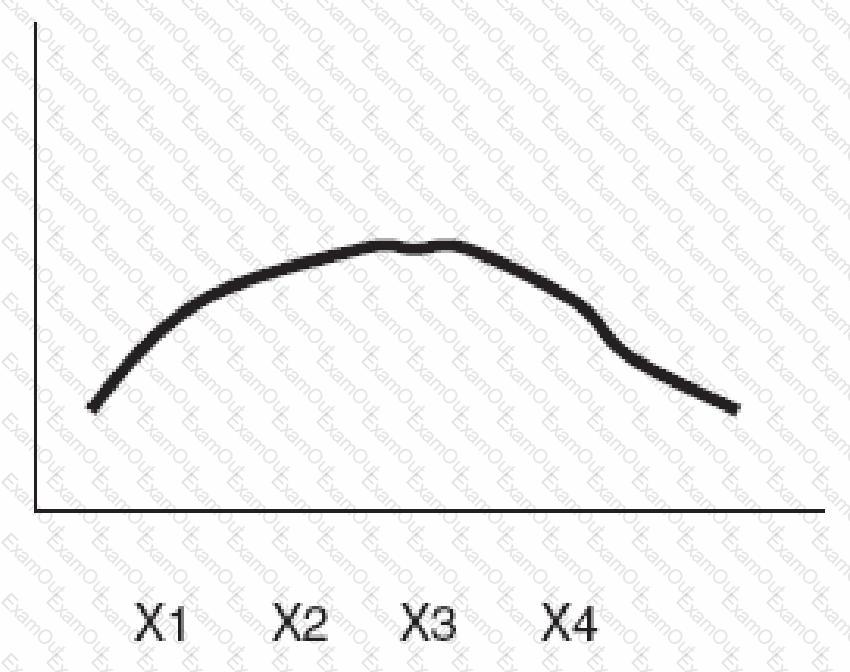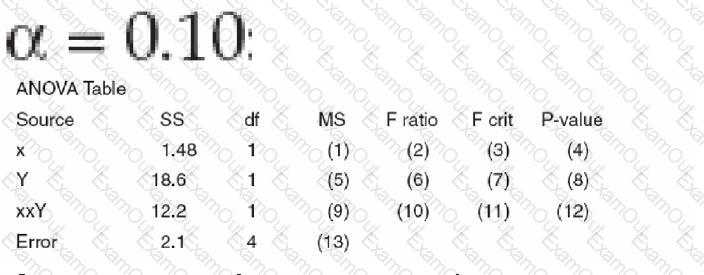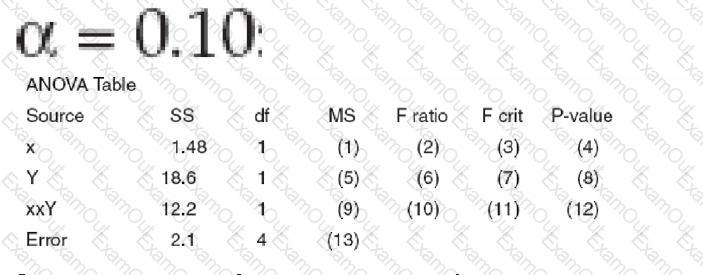All of the following experimental designs could be used to investigate interactions EXCEPT
Which value of x will minimize transmitted noise?

An indication of the experimental error is available because the design has:
Find the value of (12) in the ANOVA table. Assume:

A population is bimodal with a variance of 5.77. One hundred samples of size 30 are randomly collected and the 100 sample means are calculated. The standard deviation of these sample means is approximately:
Find the value of (2) in the ANOVA table. Assume:

A population of size 1,000,000 has mean 42 and standard deviation 6. Sixty random samples, each of size 15 are selected. According to the Central Limit Theorem the distribution of the sixty sample means has a standard deviation of approximately:
The primary metric for a project is reduced cost for process A. Baseline data might include:
A team studies a coil steel banding process and makes five changes resulting in productivity improvements of 2%, 2.8%, 2.4%, 2% and 3% respectively. These improvements are best described by which approach to problem solving?
A random sample is selected from a population of measurements. The mean of the sample is not equal to the mean of the population. This is due to:

